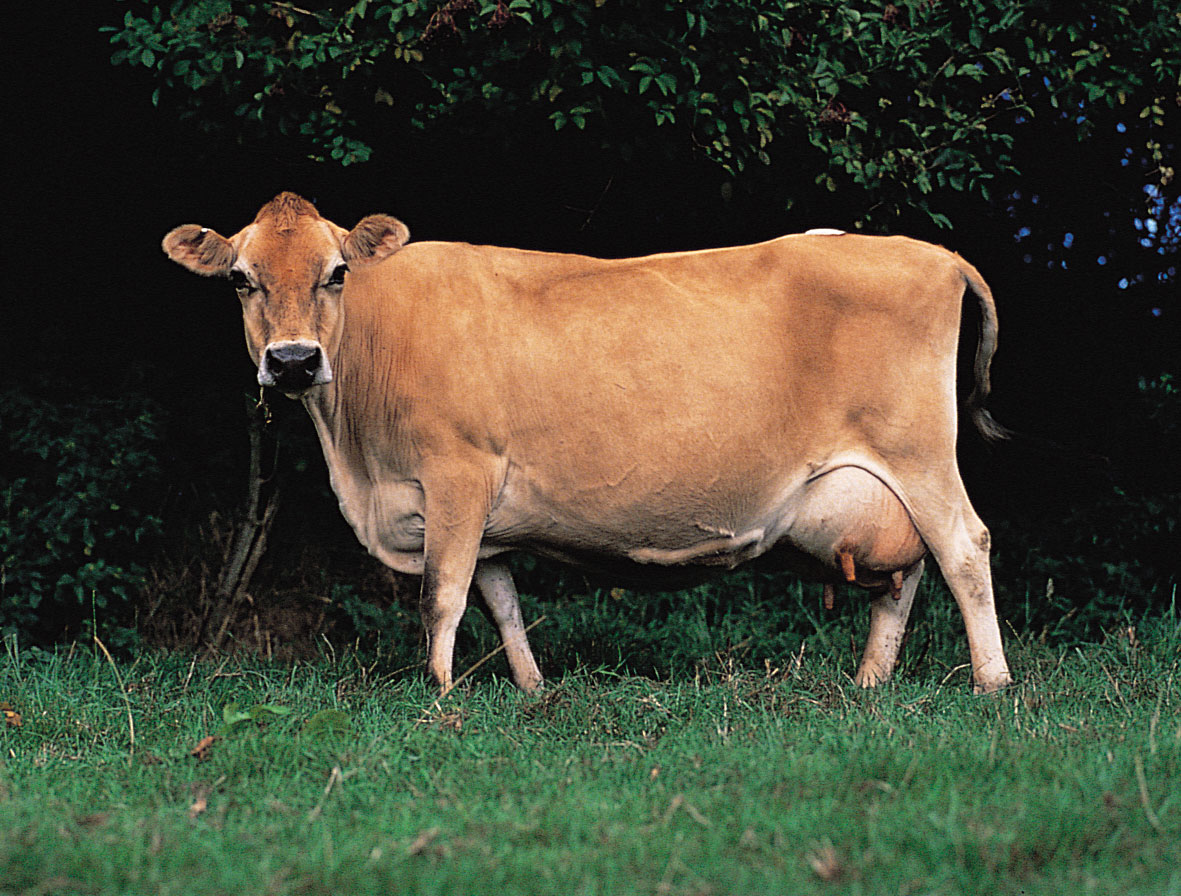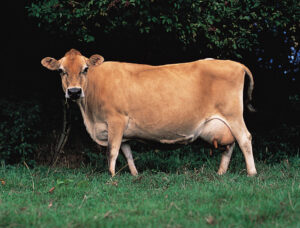When it comes to dairy cattle breeds, the Jersey breed stands out for its unique characteristics and exceptional milk production. Originating from the Isle of Jersey, located between England and France, Jersey dairy cattle have gained popularity globally due to their adaptability, high milk solids, and docile nature. This article explores the key characteristics of Jersey dairy cattle and provides valuable insights into their breeding, milk production, and overall impact on the dairy industry.
1. History and Origin
The Jersey breed traces its roots back to the Channel Islands, specifically the Isle of Jersey, where it originated during the 18th century. The breed was developed by crossing French cattle breeds with local Channel Island cattle, resulting in the distinctive features and characteristics we see today.
Jersey dairy cattle were first imported to the United States in the mid-19th century and quickly gained popularity due to their exceptional milk quality. Today, they are found in various countries around the world, contributing significantly to the dairy industry.
2. Physical Characteristics
Jersey dairy cattle are small to medium-sized animals with a unique appearance. They possess several physical characteristics that set them apart from other dairy breeds:
- Average height at the withers: 48 to 52 inches (122 to 132 cm)
- Weight: 900 to 1,200 pounds (410 to 550 kg)
- Color: Shades of brown, ranging from light tan to dark brown
- Head: Broad forehead, wide-set eyes, and a black nose
- Body: Compact and muscular, with a deep chest and well-sprung ribs
- Legs: Short and sturdy, with strong hooves
- Udder: Well-attached, with small teats
These physical characteristics contribute to the breed’s ability to thrive in various climates and terrains, making them adaptable to different farming systems.
3. Milk Production
Jersey dairy cattle are renowned for their exceptional milk production, particularly in terms of milk solids. Here are some key statistics that highlight their milk production capabilities:
- Milk yield: On average, Jersey cows produce 13,000 to 17,000 pounds (5,900 to 7,700 kg) of milk per year.
- Fat content: Jersey milk contains a high percentage of butterfat, ranging from 4.5% to 5.5%, making it ideal for butter and cheese production.
- Protein content: Jersey milk also has a higher protein content compared to other dairy breeds, typically ranging from 3.6% to 4.6%.
- Solids-not-fat (SNF): Jersey milk has a higher SNF content, which contributes to its rich flavor and suitability for various dairy products.
These remarkable milk production characteristics make Jersey dairy cattle a preferred choice for small-scale dairy farmers and artisanal cheese producers.
4. Docile Temperament
One of the most desirable traits of Jersey dairy cattle is their docile temperament. They are known for their calm and gentle nature, making them easier to handle and manage compared to more temperamental breeds.
This docility makes them suitable for small farms with limited resources, as they require less aggressive handling and are generally less prone to stress-related health issues. Additionally, their calm temperament makes them more comfortable to milk, reducing the risk of accidents during the milking process.
5. Adaptability
Jersey dairy cattle have excellent adaptability to different climates and farming systems. Their adaptability is attributed to several factors:
- Heat tolerance: Jerseys have a higher tolerance for heat compared to other dairy breeds, making them well-suited for tropical and subtropical regions.
- Disease resistance: They exhibit a higher resistance to certain diseases, such as mastitis, which can be a significant concern for dairy farmers.
- Forage utilization: Jerseys are efficient foragers and can thrive on lower-quality forage, making them suitable for grazing systems with limited access to high-quality feed.
These adaptability traits make Jersey dairy cattle a valuable asset for farmers in diverse geographical locations and varying farming conditions.
6. Breeding and Genetics
The breeding and genetics of Jersey dairy cattle play a crucial role in maintaining and improving the breed’s desirable characteristics. Selective breeding programs focus on enhancing specific traits, such as milk production, conformation, and overall health.
Modern breeding techniques, including artificial insemination and genomic selection, have revolutionized the process of breeding Jersey cattle. These techniques allow breeders to make informed decisions based on genetic potential, resulting in more productive and healthier animals.
Genomic selection, in particular, has enabled breeders to identify elite animals at a young age, accelerating the genetic progress of the breed. By selecting animals with superior milk production and health traits, breeders can ensure the continued improvement of the Jersey breed.
7. Impact on the Dairy Industry
Jersey dairy cattle have made a significant impact on the dairy industry worldwide. Their unique characteristics and exceptional milk production capabilities have contributed to the industry in several ways:
- High-quality dairy products: Jersey milk’s high butterfat and protein content make it ideal for producing premium butter, cheese, and ice cream.
- Small-scale and artisanal production: The docile nature and adaptability of Jersey cattle make them suitable for small-scale dairy farming and artisanal cheese production, contributing to local and niche markets.
- Efficiency and sustainability: Jersey cattle’s ability to thrive on lower-quality forage and their heat tolerance contribute to more sustainable and cost-effective dairy farming practices.
- Genetic improvement: Through selective breeding and advanced genetics, the Jersey breed continues to improve, providing farmers with more productive and genetically superior animals.
The presence of Jersey dairy cattle in the industry offers farmers and consumers a wide range of benefits, ensuring a diverse and sustainable dairy sector.
Conclusion
Jersey dairy cattle possess unique characteristics that distinguish them from other dairy breeds. Their exceptional milk production, adaptability, docile temperament, and genetic potential have made them a valuable asset to the dairy industry. Whether it’s their high-quality milk, suitability for small-scale farming, or their ability to thrive in various climates, Jersey cattle continue to be a preferred choice for dairy farmers around the world. By understanding and appreciating the characteristics of Jersey dairy cattle, farmers can make informed decisions to improve their herds and contribute to a thriving dairy sector.
FAQs
1. Are Jersey cows good for small-scale dairy farming?
Yes, Jersey cows are well-suited for small-scale dairy farming. Their docile nature, adaptability, and high-quality milk production make them an ideal choice for farmers with limited resources.
2. How much milk does a Jersey cow produce?
On average, Jersey cows produce 13,000 to 17,000 pounds (5,900 to 7,700 kg) of milk per year. However, individual production can vary based on factors such as genetics, nutrition, and management practices.
3. What makes Jersey milk different from other types of milk?
Jersey milk is different from other types of milk due to its high butterfat and protein content. It has a rich flavor and is considered ideal for producing premium butter, cheese, and ice cream.
4. Can Jersey cattle thrive in hot climates?
Yes, Jersey cattle have a higher tolerance for heat compared to other dairy breeds. Their adaptability and heat tolerance make them well-suited for farming in tropical and subtropical regions.
5. How do genetics contribute to the improvement of the Jersey breed?
Genetics play a crucial role in improving the Jersey breed. Through selective breeding and advanced techniques like genomic selection, breeders can identify animals with superior milk production and health traits, leading to the continued improvement of the breed.
Summary
Jersey dairy cattle possess unique characteristics that make them highly desirable in the dairy industry. Their high milk solids, adaptability to different climates, docile nature, and genetic potential contribute to their popularity among farmers worldwide. Jersey cows’ exceptional milk production, especially in terms of butterfat and protein content, makes them ideal for producing premium dairy products. Their suitability for small-scale farming and artisanal production further adds to their value. The ability of Jersey cattle to thrive in various conditions and their genetic improvement through selective breeding ensures a sustainable and diverse dairy sector. By understanding the characteristics of Jersey dairy cattle, farmers can make informed decisions for their herds and contribute to the growth and success of the dairy industry.



